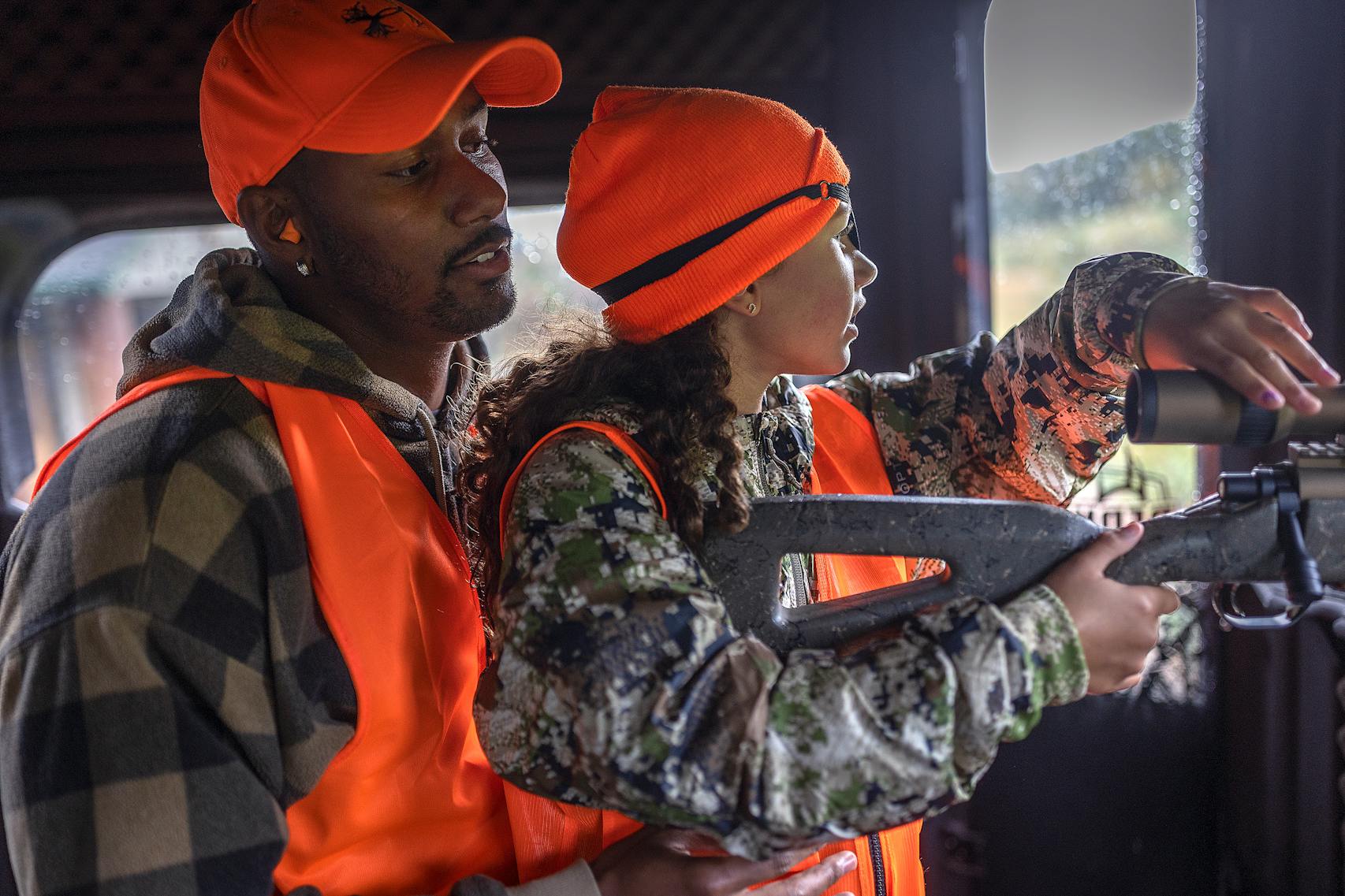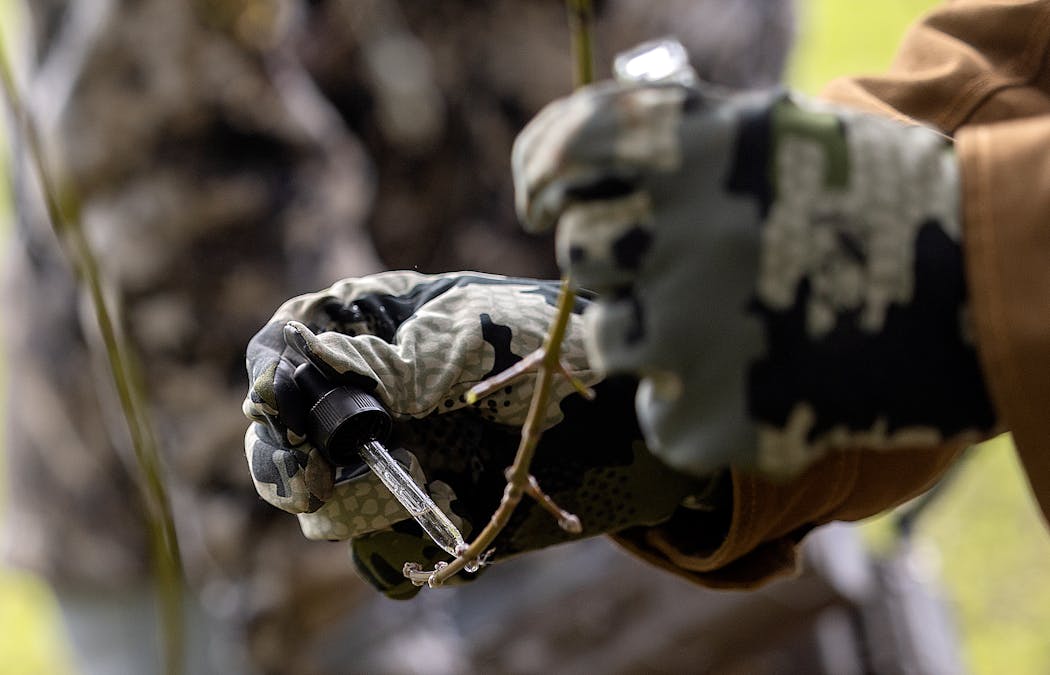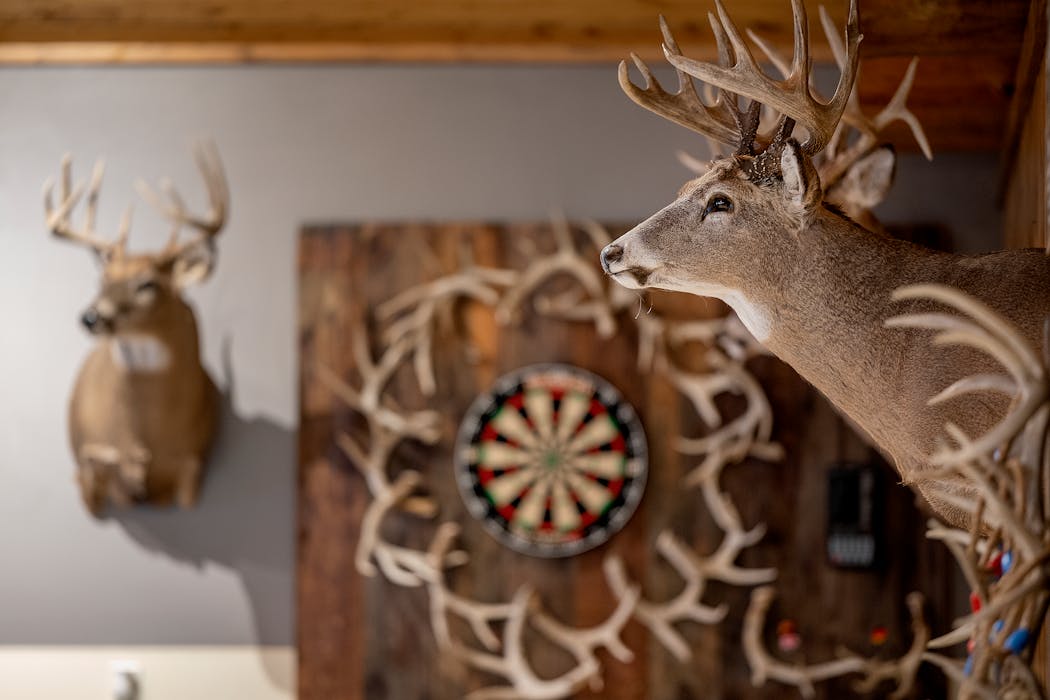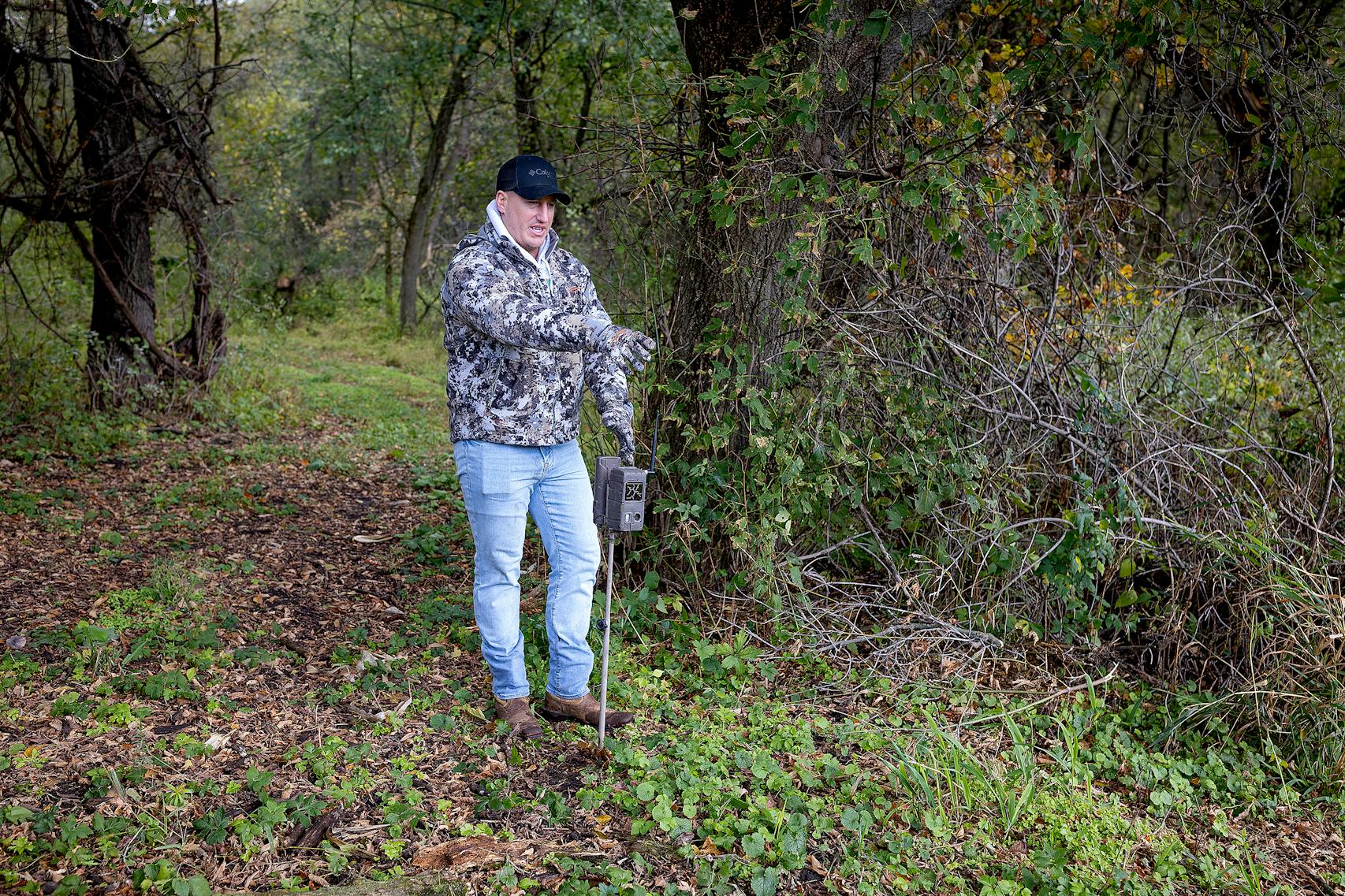rae Waynes shouldered his hunting rifle and took a knee in the steep, wooded blufflands of Buffalo County.
It was one day prior to this fall's Wisconsin youth deer hunt and he was using the gun's scope to spy on whitetails in the distance. Two days later, his 7-year-old daughter, Layla, would shoot her first deer — aptly described by mom and dad as a "mega-giant."
During his playing days as a first-round pick for the Vikings, Trae Collin Waynes maintained a low profile off the field. In retirement, he has entered the hunting world with a splash as big as Layla's 11-point buck.
At age 31, the former cornerback has become one of the biggest landowners in one of the nation's most coveted whitetail landscapes. Since 2018, his Home Grown Outfitters business has acquired upward of 3,500 acres of pristine hunting land in Buffalo County, spending tens of millions of dollars in the process. Lifelong residents of the county 75 miles southeast of the Twin Cities have never seen anything like it, and his buying spree, along with his NFL celebrity, have tongues wagging in nearly every local deer camp and on many of the area's farms.
In the 2015 NFL draft, the Vikings picked Waynes 11th overall out of Michigan State. He played five seasons under coach Mike Zimmer. In his final two NFL seasons, he was plagued by injuries while with the Cincinnati Bengals.
Today, Waynes looks fit enough to rejoin the Vikings secondary. He was a freshman at Michigan State when Kirk Cousins was the team's senior quarterback. They remain friends. But Waynes said he endured enough of the sport's mental and physical toll by the end of the 2021 season, when he played a few snaps for the Bengals in Super Bowl LVI.
"I knew I didn't want to play football forever," he said during a recent tour of two of his hunting properties.
Moreover, he intentionally chose a 70-acre homestead in southern Montana to get far away from the spotlight.
"I wanted to go somewhere where they didn't care about football," Waynes said. "We moved there to escape the big city, that fast life and all the chaos."
Now his life revolves around his wife, Kyra, and their four children, frequently outdoors. They hunt (Kyra recently took down a Montana bull elk), fish, ride horses, do barn chores, search for shed antlers and ride four-wheelers.
"The hunting aspect for my family has been a bonus," he said. "I'm not forcing them to do it … but they won't be isolated from things like gutting a deer or firearms safety."
Buy high, sell higher
Amid Buffalo County's gorgeous contours of farm fields and forests, deer hunters have long placed upward pressure on real estate prices. Not only is the habitat ideal for whitetails, most hunters in these valleys share in the nobility of allowing young bucks to grow old and big.
With Home Grown, Waynes has pushed the land market to new extremes. Area farmers who once said they would never sell their land have received offers from him that they couldn't refuse. The churn has also lifted the market for seasonal land leases — the traditional ticket for outsiders to hunt in Wisconsin's land of record-book bucks.
MeatEater, a national outdoors lifestyle company, once ranked Alma, the county seat, as the second-best deer hunting town in America. Buffalo County also produced the famous Field & Stream magazine buck of 2008, a 16-pointer believed to be among the largest typical whitetail bucks ever taken. Hall of Fame quarterback Brett Favre has hunted here, as well as Hank Williams Jr.
"Everybody wants this land and nobody wants to let it go," said RP Pelke, a real estate broker in Durand, Wis. "He [Waynes] comes in and a guy like that is really pushing it. … For sure, he's having an impact."
Greg Haselwander, a real estate broker who has been making land deals in Buffalo County for 20 years, said sizable parcels were selling in the range of $4,500 to $6,000 per acre before Waynes jumped in. Since then, deals of $7,500 to $8,000 per acre have become the norm while exemplary pieces go for over $10,000 an acre, he said. Waynes has been a central buyer, but other outfitters have joined the fray.
"The trend is to put farms together to own a big piece," Haselwander said. "Then it's easier for buck management.''
Expanding opportunities
"We have a very popular deer-hunting county," said Cale Severson, director of land management and conservation in Buffalo County. "With Trae now, it's kind of wild."
Waynes himself wouldn't disagree. He said Home Grown has a waiting list of 3,000 would-be customers from around the country who are willing to pay upward of $7,000 to spend a few days hunting for a once-in-a-lifetime wild buck. Nothing is fenced in. At night, the guests rest easy in a deluxe lodge where meals are prepared by a professional chef. In the field, they are positioned by a licensed guide in weatherproof blinds.
"We don't overhunt our properties and we keep our guests comfortable," Waynes said. "At the lodge, it's almost like a locker room setting, but for hunting."
Especially during Wisconsin's peak deer season before and after Thanksgiving, Waynes travels from his home in Montana to partake in the camaraderie.
"When there's a buck harvest and Trae is around, he gets more excited than the client," said Jeff Althoff, Waynes' business partner.
Waynes and Althoff said they have already enjoyed large financial returns by buying and selling parcels, flipping them once they groom them into dreamy hunting lands. The end game of their business plan in Buffalo County is liquidation, but they are holding on to most of their properties and selling trophy buck hunts while they build their brand.
For now, they said, Home Grown's portfolio includes 25 properties in Buffalo County, ranging up to 650 acres in size. Three of the properties include hunting lodges. Their modus operandi after buying the land is to cut trails with heavy equipment, log certain timber stands, plant new trees, install deer stands, plant food plots for wild deer and dig watering holes for them. Those investments are substantial, Waynes said, but he and Althoff plan to make it all back — and then some — by selling to upper-crust buyers from around the country who desire the ultimate "turn-key" deer hunting property.
"If I can't get my money back, I won't buy it," Waynes said. "These purchases are long-term investments."
According to the football website overthecap.com, Waynes earned $52.8 million over his seven-year career in the NFL. He said he has been able to expand Home Grown without taking on investors. Besides redrawing the land ownership plat map in Buffalo County, he and Althoff are looking for similar opportunities in Iowa and Kansas.
Early love for the outdoors
In part, Waynes said, his new life is a departure from his upbringing in Kenosha, Wis., where his parents are school guidance counselors. Ron and Erin Waynes were both collegiate track stars, but Trae chose football. One of his childhood friends and high school teammates was Melvin Gordon, the former University of Wisconsin running back now with the Baltimore Ravens.
Waynes said no one in his extended family hunted, but he learned to love the outdoors on childhood visits to his grandparents' 30-acre farm in Illinois. His autumns were taken up by football until he finally experienced deer hunting while playing for the Vikings. That's when he started peeling down to Buffalo County with friends on his days off.
One of those friends, a Minnesotan he met by chance at Mystic Lake Casino, was Althoff, a corporate finance whiz and town team baseball player from Delano. They and their wives have grown close.
"It basically came from that Minnesota Nice," Waynes recalled. "They reached out, like, 'Oh, you are new here … can we help?' I'm more reserved, but they were really open."
Kyra's father, Bill Luther, said it was Althoff who eventually pitched an 11-year business plan to Trae and Kyra for what became Home Grown Outfitters LLC and Love the Grind TV, a professionally produced, hunting-oriented YouTube channel.
Althoff said Love the Grind models excellence in the field while preaching ethical hunting. It's an emphasis somewhat related to him hitting the "reset button," he said, after pleading guilty to a misdemeanor for falsely registering a game farm buck in 2018 in Wisconsin. He considers the violation, unrelated to Home Grown, a blessing as a reminder "to do everything the right way."
Formerly a successful corporate finance executive in the Twin Cities, Althoff now spearheads the business' field operations in consultation with Trae while Kyra handles the administrative work. Trae created the "Home Grown" moniker as an ode to his Wisconsin upbringing.
Severson, Buffalo County's land manager, said Home Grown's expansion is to the point where county officials will soon meet with Waynes to possibly introduce lodging and commercial kitchen regulations.
He also said there has been some concern at the county board level about the hunting properties being enrolled in a forestry program that reduces the rate of property taxes. But, Severson said, lands acquired by Home Grown were probably already in the lower tax category.
"One person grabbing all this land in a block has raised some eyebrows," Severson said. "But I don't see a big change in land use … Our county's historically been at the forefront of conservation."
As Home Grown spreads its wings, Waynes and Althoff said they're benefiting from an assortment of revenue streams. Besides collecting outfitting fees and timber receipts, they're benefitting from marketing agreements with nine hunting goods manufacturers. Their video and photo productions generate money and they run a consulting business instructing hunters on how to landscape their own properties for growing and holding trophy bucks.
"I'll be sitting very, very well by the time we liquidate," Waynes said.




